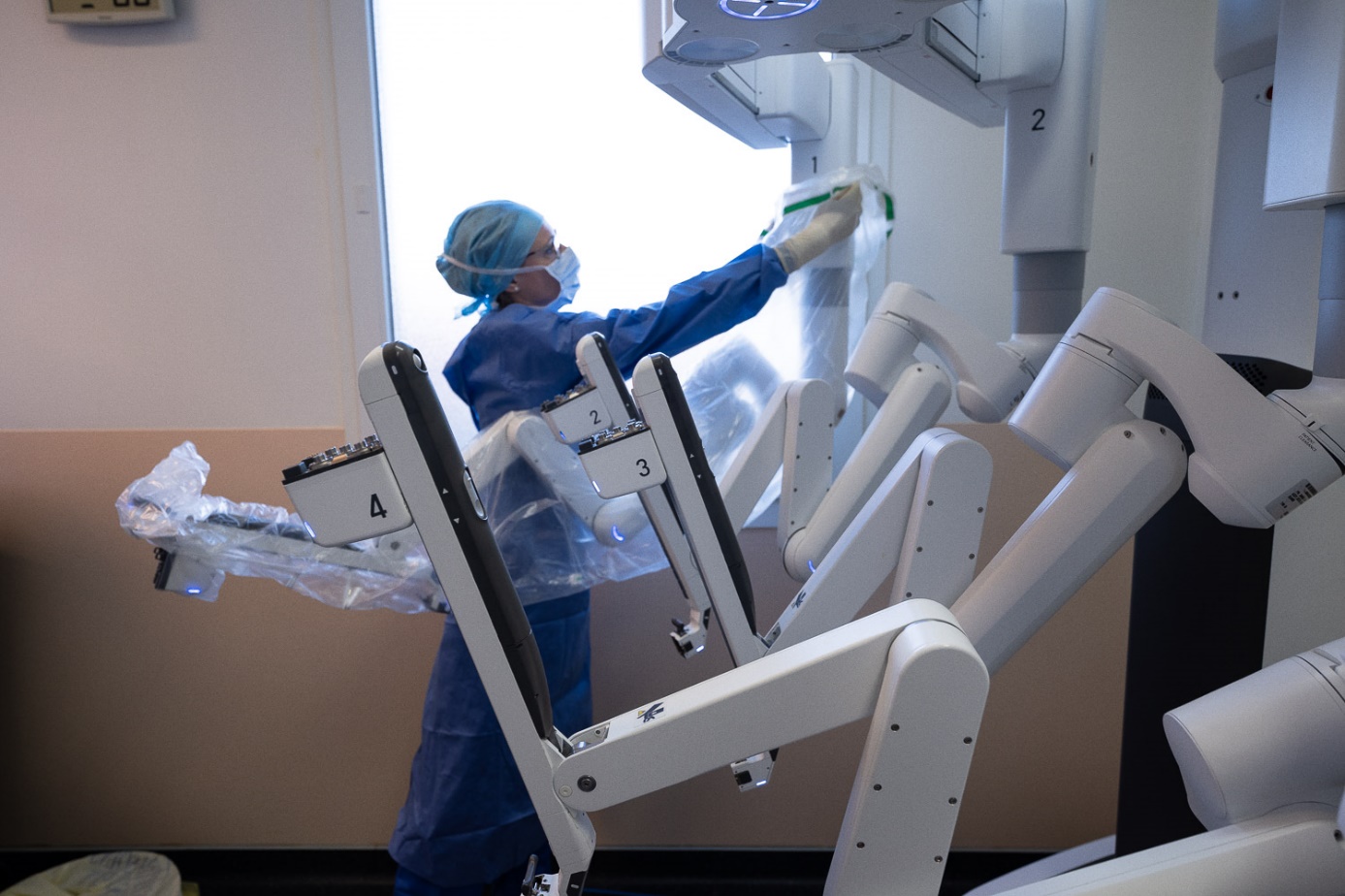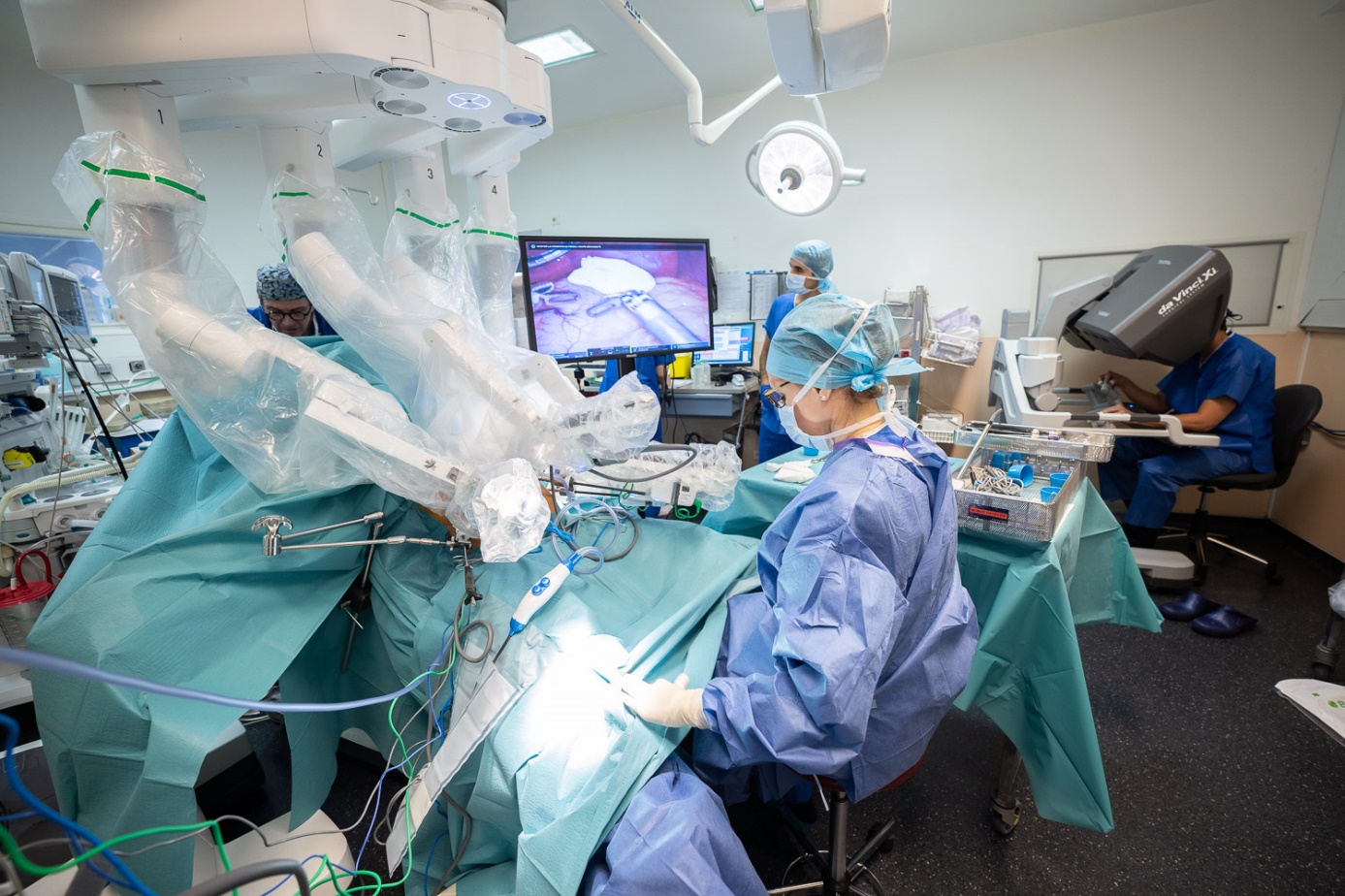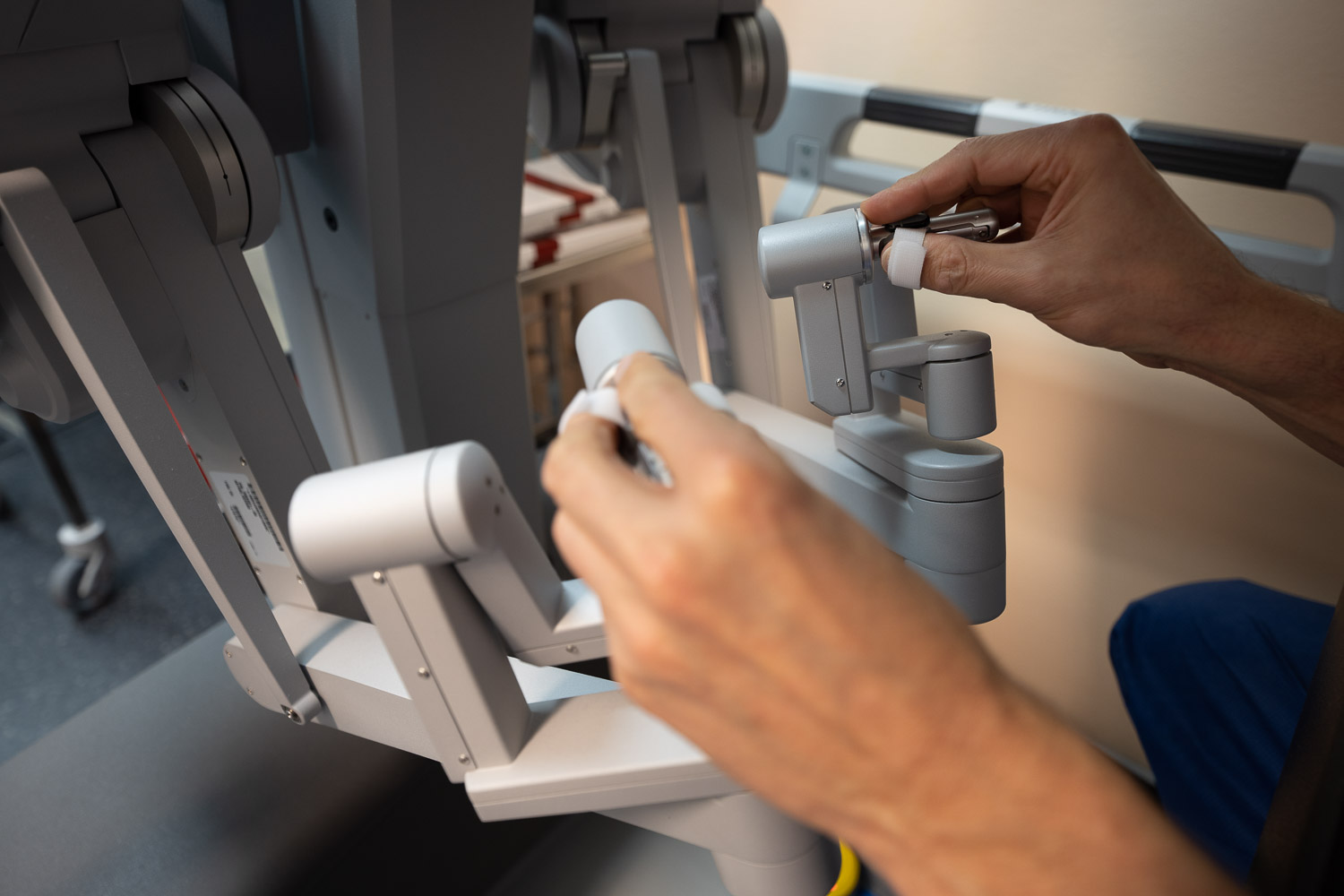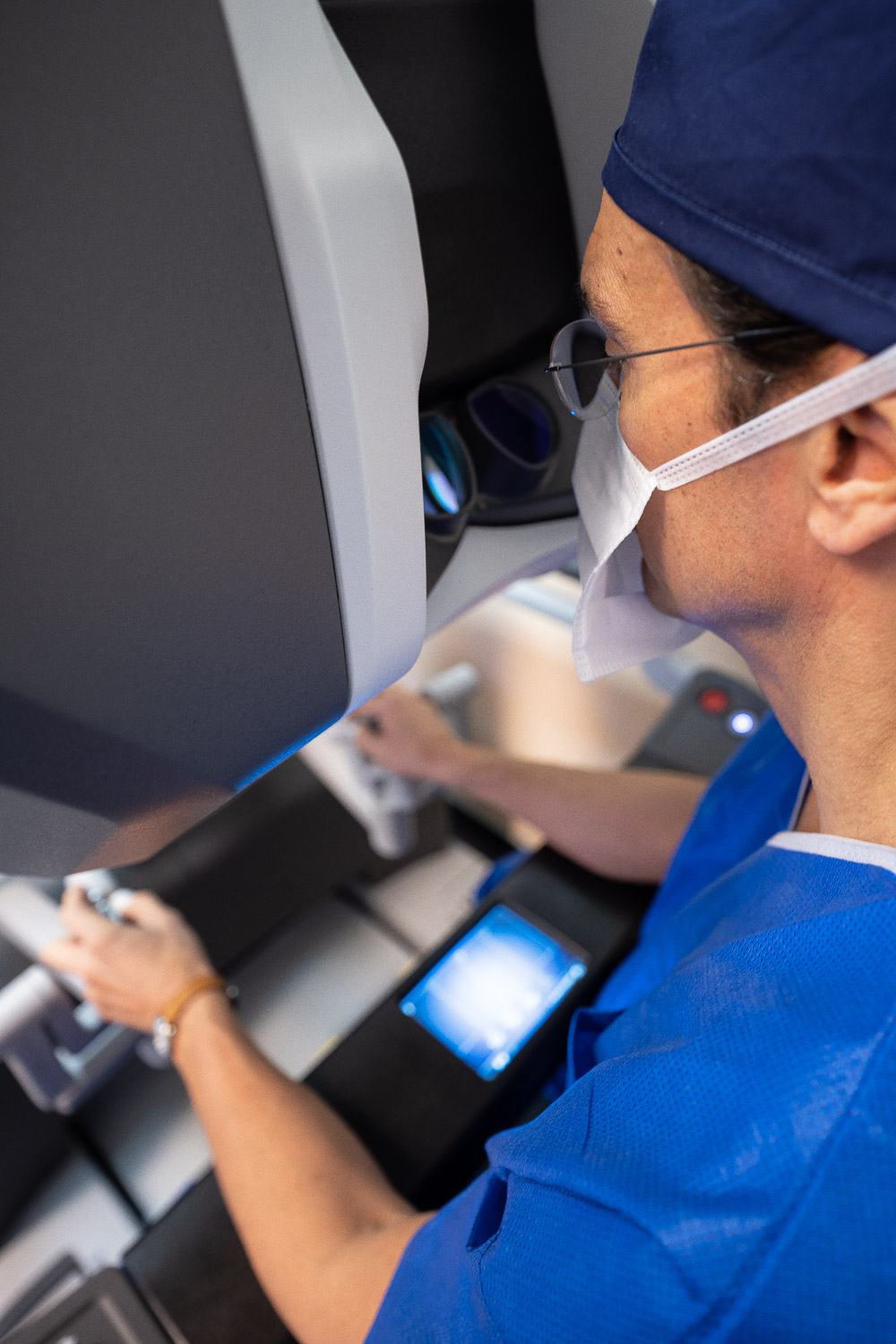ROBOTIC SURGERY - Dr. BRUTO RANDONE
Since its clinical beginnings in 2000, minimally invasive robot-assisted surgery has made tremendous progress. After several generations of robots, it has established itself as a valid alternative to traditional surgery thanks to many advantages.
The surgical robot has 4 articulated arms: the first manages the optics and the other three use the same types of instruments suitable for classical laparoscopic surgery.
The surgeon guides the robotic arms, seated at a console located next to the patient. He uses two joysticks and pedals to control and select which arms to use.
The robot faithfully reproduces the movements of the surgeon's hands, from the console to the robotic arms, while giving the possibility of 360 ° articulation of the instruments. After a little practice, the surgeon feels that the robotic instruments are an extension of his own hands.
This joint is one of the main advantages of robotic surgery over laparoscopic surgery. It allows to find the freedom of movement specific to open surgery while remaining in a minimally invasive dimension.
However, robotic surgery has other advantages, such as a 3D vision so real that it gives the surgeon the impression of being “immersed” in the operating field, associated with absolute image stability and possibility of zooming more important; which is very useful in more complex procedures.
The surgeon can work in a more comfortable and ergonomic position and sees his dexterity increased, thanks to the absence of parasitic movements or tremors and to the multiplication of gestures, which consequently become much more precise.
The length of hospital stay is shortened and post-operative pain is reduced. The latter is mainly due to a reduction in the range of movement of the instruments at the level of the abdominal wall thanks to the possibility of 360 ° articulation of the instruments inside the abdomen.
The digestive surgeon uses the robot for different types of procedures in the stomach, liver, pancreas, colon and rectum. With regard to bariatric surgery, the robotic bypass is now a confirmed and recognized technique by SOFFCOMM (French and Francophone Society of Obesity and Metabolic Diseases Surgery).
The use of the operating robot is regulated by the acquisition of specific training for the entire team (surgeons, block nurses, anesthesiologists etc.)
Dr. Bruto Randone has been practicing robotic surgery since January 2015 after obtaining the Da Vinci certificate of qualification for robotic surgery.
Instagram: to watch the videos / reels click on the icon on your screen or here.
♦ To make an appointment with Dr. Bruto Randone, ENGLISH SPEAKING Visceral and Digestive Surgeon, at the Clinique Internationale du Parc Monceau, 21 Rue de Chazelles, 75017 Paris, France, or at the Clinique Bizet, 23 Rue Georges Bizet, 75116 Paris, click on Contact.





